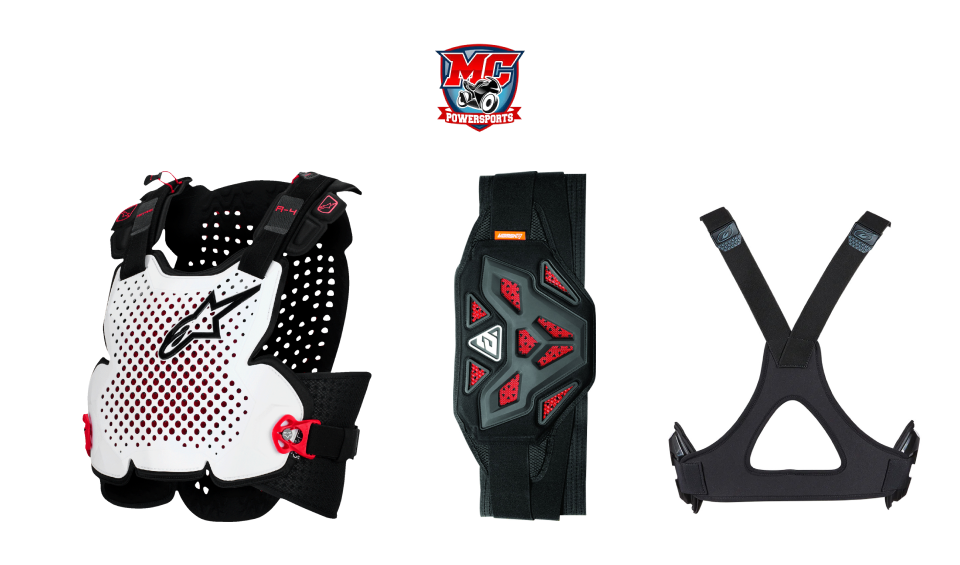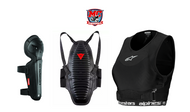Motorcycle Safety Myths Busted and What Really Keeps You Safe
Posted by undefined
Riding a motorcycle is, perhaps, one of the last real hobbies that engages all your senses. Your entire body moves the bike, you hear your surroundings, you look at every little object; it is quite engaging, to say the least. However, there is no sugarcoating it, riding can be dangerous, and thankfully, riders acknowledge that.
The thing is, motorcycling is so widespread and has been in practice for such a long time, there are several misnomers about it. So, in this blog post, we'll be debunking motorcycle safety myths.
Myth 1: Full Face Helmets Block Your Vision and Hearing
There are harmless myths, and then there are myths like this one that are actively damaging to the world of biking. Some bikers back in the day did not want to wear a helmet and made up this excuse, and it just caught on and spread like fire amongst other riders who do not wish to wear a helmet either.
Federal safety standards mandate a helmet to provide 210 degrees of vision, which is enough to keep an eye out for most ranges in a crash. Furthermore, all helmet providers make sure they offer at least 105 degrees of peripheral vision from the mid-sagittal plane. Furthermore, studies have been conducted to show that helmets do not negatively impact vision.
So, invest in top-quality motorcycle helmets, full-faced, and keep your noggin safe. Also, helmets don't last forever. As a rider, you ought to know when to replace your motorcycle helmet and why it matters. (Psst, if you're wondering, the right time is every 3–5 years depending on usage.)
Myth 2: Loud Pipes Are a "Safety Feature"
Loud pipes are a personal preference, not a safety feature. Sorry to break that bubble, but that's the hard truth. Exhaust noise goes out from the back, so it isn't particularly going to make the car driver in front of you, who's more than likely blasting music, notice you any better.
Don't get us wrong, we totally understand wanting your motorcycle's exhaust note to sound a certain way; but to call it a safety feature, or make phrases like "loud pipes save lives," is just false.
Myth 3: Don't Use the Front Brakes
In terms of how bad motorcycle safety myths go, this one is a solid 8/10. The majority of riders, it appears from our anecdotal experience, believe the front brakes ought not to be used as it would result in the bike flipping.
Perhaps that would happen in a movie, not in real life. Besides, if you're expecting to do a stoppie by just pressing too hard on the brake, hate to break it to you, but that's just one part of the process; stunting is a real art and requires determination and skill.
Getting back on track here, modern bikes are equipped with ABS, which is designed to handle sudden braking safely. Seventy per cent of the power resides within the front brakes. Imagine never using your dominant hand in a fight? It is silly.
If you're wondering, the best braking technique is a combination of front, rear, and engine braking, followed by rev matching for the smoothest transition.
Many riders fear that pressing too hard on the front brake will cause the bike to flip. Modern motorcycles, especially those with ABS, are designed to handle sudden braking safely. Practising emergency braking in a controlled environment helps riders trust the system and respond correctly in real-world emergencies.

Myth 4: Gear Is for Amateurs/It Won't Happen to Me
It is perhaps one of the more ignorant/delusional statements made by riders that they don't need gear because "I won't crash." Whilst confidence in your riding abilities is necessary, arrogance can cost you a lot.
We ride on public roads, and public roads are shared spaces. To play the devil's advocate, one could say that in a controlled environment, you can bypass wearing gear. However, on the national highway, with people texting and driving, drunk drivers, reckless drivers, rash drivers, and drivers who dislike bikers for no apparent reason, that's putting too much trust in strangers.
Also, whilst riding a motorcycle, a simple rock on the road can result in you falling down, and skin-to-asphalt contact is seldom pleasant. Wear good-quality motorcycle riding gear!
Myth 5: Brightly Colored Bikes Are Always Seen
Owning a bright red or neon green bike helps, but it doesn't guarantee you'll be seen. There are drivers who, alas, don't care about riders (because they're not as cool as us,) and then there are drivers who, unfortunately, are just blind to bikers. It isn't their fault; bikes are smaller and tend to zip through traffic.
For someone sitting inside a car, with massive blind spots, they can struggle to see your bike. So, whilst reflective gear, running headlights, and bright colors are all helpful and should be used, drive under the assumption that they don't see you and maintain a safe distance.
Conclusion
Motorcycle safety myths are now spreading like wildfire thanks to the internet and the fact that buying a motorcycle is easier now than ever before. These myths ought to be debunked for the sake of riders old and new. Motorcycling will always have risks, but believing in this stuff will make it riskier. Ride safe, think rationally, and always wear your gear.
Frequently Asked Questions
Are leather jackets actually effective for motorcycle safety?
Yes. Leather jackets are not just for style. They provide abrasion resistance that regular clothing cannot. In a slide, denim can rip almost instantly, while quality leather or motorcycle-grade textiles give you crucial protection against road rash and impact.
What kind of helmet should I choose?
Always choose helmets that meet or exceed DOT and ECE safety standards. These certifications mean the helmet has been tested for impact resistance and durability. All MC Powersport helmets sold meet these standards so you can ride with confidence knowing you are properly protected.
Do I really need protective gear for short rides?
Yes. Most motorcycle accidents happen close to home, often on short routine trips. Even if you are just heading down the street, full protective gear including helmet, jacket, gloves, and boots can make the difference between minor injuries and something serious.

